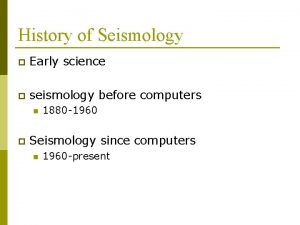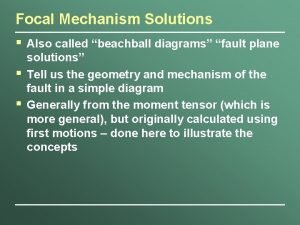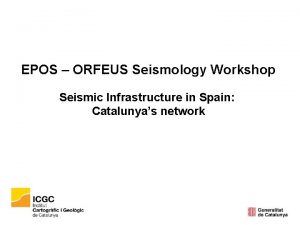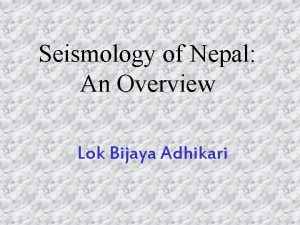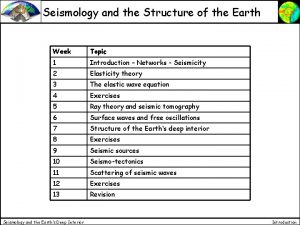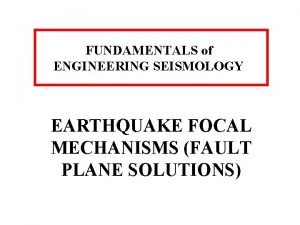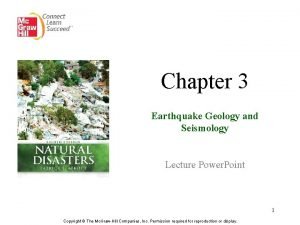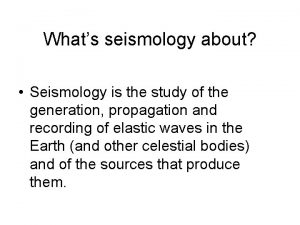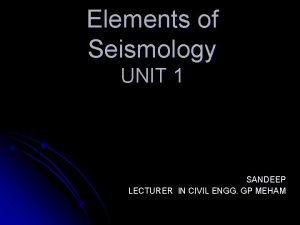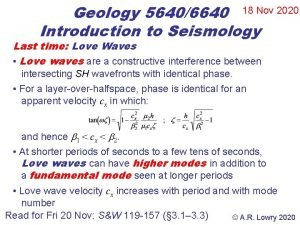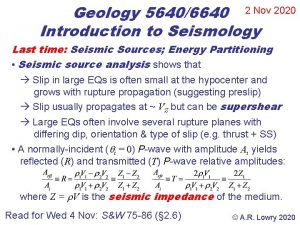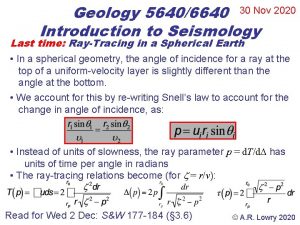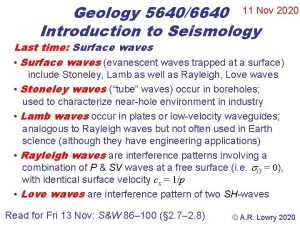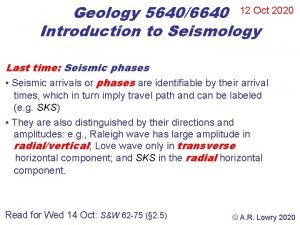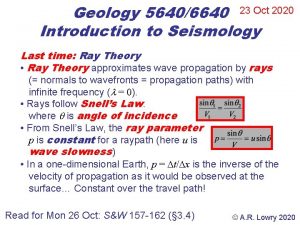Geology 56406640 9 Nov 2020 Introduction to Seismology








- Slides: 8

Geology 5640/6640 9 Nov 2020 Introduction to Seismology Last time: Evanescent waves; Surface waves • A wave arriving with incident angle ≥ the critical angle (i. e. , j 1 ≥ sin– 1( 1/ 2)) still requires continuity of stress and displacement. Transmission is “imaginary”, & solution is e. g. : These exponentially decaying “trapped” displacements are called evanescent waves • When an evanescent wave occurs, balancing of the stress and displacements at the boundary yields reflection and transmission coefficients that are complex numbers; the imaginary part of these results in a phase delay of the reflected and converted waves! Read for Wed 11 Nov: S&W 86– 100 (§ 2. 7– 2. 8) © A. R. Lowry 2020

Last time continued: Surface waves • Surface waves (Love, Rayleigh) are important because: Cylindrical spreading (A 1/ r) these are the largest arrivals outside the near-field They are responsible for most of the damage in earthquakes!

• Surface waves are dispersive: different wavelengths travel at different velocities and sample different depth ranges of Earth structure!

Types of Surface Waves: 1) Rayleigh waves 2) Lamb waves 3) Love waves 4) Stoneley waves Basically, a surface wave describes any wave that can only propagate along a free surface (i. e. , when one of the media has zero shear strength).

Stoneley (“tube”) waves: Occur under certain conditions along elastic-fluid or elastic-elastic interfaces. These are a source of noise in borehole active source seismology (e. g. wireline logging, or vertical seismic profiling (VSP). However, they are also an important source of signal in borehole active source seismology! TAMU

Lamb waves are waves within a plate-like object having two free-surfaces, and are analogous to Rayleigh waves in the Earth… Useful e. g. for engineering-related defect detection. Here, image of a defect behaving like a source disturbance. Wikicommons David Greve, Carnegie Mellon

Love waves are composed of SH motion only. These do not propagate in a uniform flat medium, but do occur in a curved Earth, or a layered medium.

Rayleigh waves are an interference pattern composed of P-SV motions. These require shear- and normal-stress ij = 0 at an interface (so could occur e. g. along a fracture as well as at the Earth’s surface).
